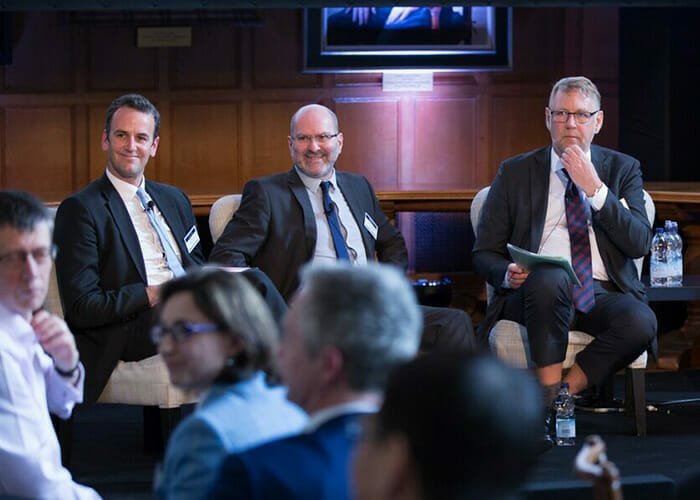An estimated $3.4 trillion is invested in renewable energy but that is set to grow to much more. The compelling case for investing in renewable energy comprises: consumer demand, revolutionary technology such as electric cars, changing corporate behaviour, and galvanising factors such as the sustainable development goals (SDGs), a panel of experts has argued.
Electricity is no longer a homogenised product and market choice is allowing consumers to vote with their feet, some of the most influential consumers are corporations. Many large, investment-grade companies have committed to using renewables, argued Alex Brierley, investment director, Octopus Investments, in the UK. These companies are committing to buying power directly from renewable energy providers at fixed prices. It is giving renewable assets a new cashflow certainty many are losing as government subsidies that have supported solar and wind projects fall off.
Although it is a “big decision” for companies to lock-in long-term costs, Brierley, who spoke in the panel at the Fiduciary Investors Symposium at the University of Oxford, said the arguments to do so are compelling, particularly as renewable energy prices continue to fall. Paul Crewe, executive director and chief sustainability officer at the UK’s Anthesis Group, noticed the corporate shift into renewable energy during a nine-year tenure as a sustainability officer at supermarket chain Sainsbury’s.
“Sainsbury’s is 149 years old but in that entire history, sustainability has brought the supermarket its highest returns on investment,” Crewe said.
The panellists noted that companies aren’t just turning to renewables for investment. They are also looking at how to decarbonise transport fleets and tackle infrastructure challenges.
The investment returns from renewable energy are good for pension funds, noted Peter Damgaard Jensen, chief executive of the DKK269.6 billion ($44.5 billion) Danish pension fund Pensionskassernes Administration (PKA), which first invested in renewables back in 2011 when it bought a stake in a large offshore park in Denmark. The fund targets long-term returns of about 6 per cent a year. Looking ahead, Jensen says renewable asset investment opportunities will open in emerging markets, where transactions are often easier, and “leapfrog” investment processes in developed markets, storage and grid infrastructure. Investment will also be backed up by much more accurate forecasts of the amount of power renewable assets produce, he said.
Grid infrastructure is an investment opportunity because solar and wind generation is subject to weather vagaries that make balancing supply and demand difficult.
“There are interesting technologies that can balance supply and demand,” Brierley noted.
Although renewable assets tend to sit in investors’ infrastructure and alternatives portfolios, they also fit in equity or credit allocations. For mature pension funds, renewables are an important source of cash flow, and could be a useful source of income in a downturn. Some investors use leverage to increase returns. Investment returns can jump from 5 per cent to 6 per cent on an unleveraged basis to 10 per cent on a leveraged basis.
The asset class still faces risks. Governments are scaling back on subsidies, exposing investors to price uncertainty. It is also difficult to accurately measure renewables’ impact on meeting SDGs. And although renewables offer diversity in a crisis, it is not yet clear how they will perform in a downturn.
“Will the asset classes be resilient if we see a financial crisis?” Jensen asked. “In theory, they will behave well, but we really don’t know yet.”




